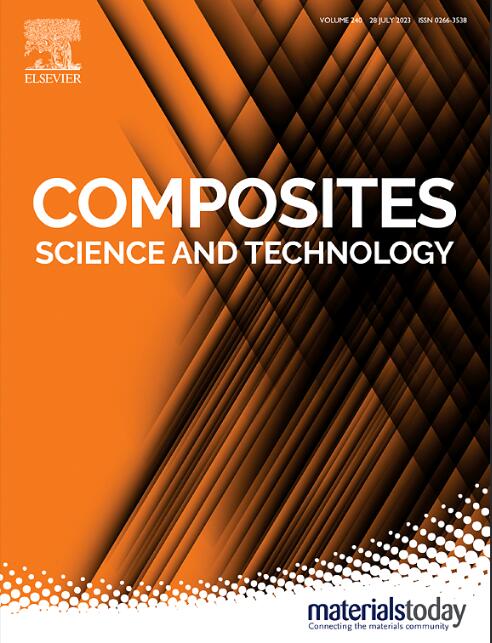基于原位微尺度测量的3D打印连续纤维增强复合材料过程建模与变形预测
IF 8.3
1区 材料科学
Q1 MATERIALS SCIENCE, COMPOSITES
引用次数: 0
摘要
3D打印连续纤维增强热塑性复合材料(cfrtpc)是一种很有前途的制造技术。然而,打印部件中残余应力释放引起的变形仍然是不可避免的,并且缺乏精确和全面的测量或模型来解决其形成背后的微观因素。本文介绍了与残余应力形成有关的工艺参数的原位测量,包括温度梯度、印刷力场和印刷样品的变形。由于温度是产生残余应力的关键因素,本研究介绍了一种利用温度敏感预浸丝对打印温度场进行原位微尺度表征的方法。该方法能够在印刷过程中精确测量预浸丝不同微观区域的全生命周期温度数据。利用实测数据,包括温度、印刷压力和张力,本文提出了一种多尺度的过程建模方法,称为“挤压过程-印刷过程组合”。该模型模拟了挤出过程中的温度场分布,以及打印过程中的残余应力和变形。仿真结果经实验验证,误差小于5%。利用该模型进行了降低残余应力的初步工艺优化。此外,还分析了不同工艺参数对打印过程温度梯度和打印样品变形的影响。结果表明,通过优化印刷工艺,有望减少复合材料印刷产品中残余应力的产生。本文章由计算机程序翻译,如有差异,请以英文原文为准。

Process modeling and deformation prediction of 3D printed continuous fiber-reinforced composites based on in-situ micro-scale measuring
3D printing of continuous fiber-reinforced thermoplastic composites (CFRTPCs) is a promising manufacturing technology. However, deformation caused by the release of residual stresses in printed parts remains unavoidable, and there is a lack of accurate and comprehensive measurements or models addressing the microscopic factors behind their formation. This paper presents in-situ measurements of process parameters related to residual stress formation, including temperature gradients, printing force fields, and deformation of printed samples. As temperature is a key factor contributing to residual stresses, this study introduces an in-situ micro-scale characterization method for the printing temperature field using temperature-sensitive prepreg filaments. The method enables accurate measurement of the full life cycle temperature data across different microscopic regions of the prepreg filament during printing. Using the measured data, including temperature, printing pressure, and tension force, this paper proposes a multi-scale process modeling method referred to as the “extrusion process-printing process combination”. This model simulates the temperature field distribution during the extrusion process, as well as the residual stress and deformation during the printing process. Simulation results were validated by experiments, with an error margin of less than 5 %. Using this model, the preliminary process optimization for reducing the residual stress was carried out. In addition, the effects of various process parameters on the temperature gradient during printing and the deformation of printed samples were analyzed. The results show that by optimizing the printing process, it is expected to reduce the generation of residual stresses in composite printed products.
求助全文
通过发布文献求助,成功后即可免费获取论文全文。
去求助
来源期刊

Composites Science and Technology
工程技术-材料科学:复合
CiteScore
16.20
自引率
9.90%
发文量
611
审稿时长
33 days
期刊介绍:
Composites Science and Technology publishes refereed original articles on the fundamental and applied science of engineering composites. The focus of this journal is on polymeric matrix composites with reinforcements/fillers ranging from nano- to macro-scale. CSTE encourages manuscripts reporting unique, innovative contributions to the physics, chemistry, materials science and applied mechanics aspects of advanced composites.
Besides traditional fiber reinforced composites, novel composites with significant potential for engineering applications are encouraged.
 求助内容:
求助内容: 应助结果提醒方式:
应助结果提醒方式:


